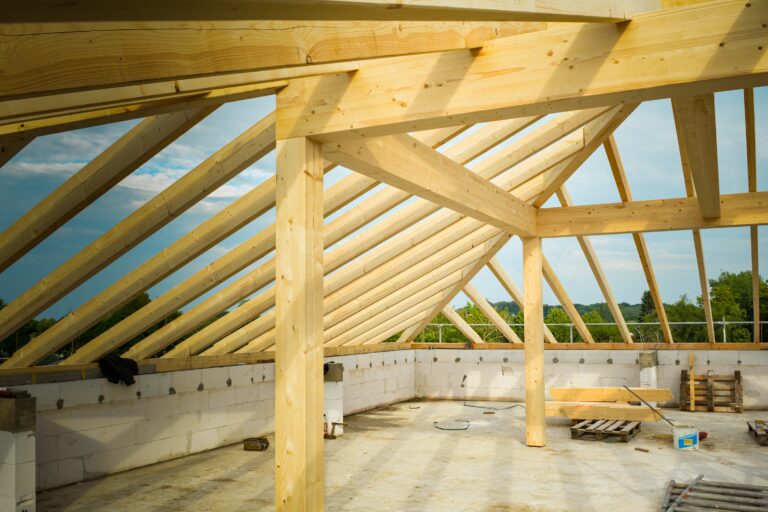Hand cut rafters vs manufactured trusses: Which is better for your home?
When it comes to constructing a roof, two of the most popular options are hand cut rafters and manufactured trusses. Both methods have their advantages and disadvantages, and the choice ultimately depends on the specific needs and requirements of the project. In this article, we will discuss the difference between hand cut rafters and manufactured trusses to help you make an informed decision.
Hand Cut Rafters
Hand cut rafters are traditional, time-tested roof framing systems that have been used for centuries. These are custom made and are cut and shaped on site using lumber and specialized tools. Hand cut rafters consist of a series of individual pieces, including rafters, ridge boards, collar ties, and bracing. They are typically made from solid wood, and the size and shape of each piece are determined by the span of the roof, the pitch of the roof, and the load-bearing requirements.
One of the biggest advantages of hand cut rafters is their flexibility. Since each piece is cut and shaped on site, they can be adjusted to fit any unique roof design, no matter how complex or irregular it may be. Additionally, hand cut rafters offer a more traditional look and feel that many homeowners find appealing.
However, there are some downsides to hand cut rafters as well. One of the biggest disadvantages is that they are labor-intensive and time-consuming to install. It can take several skilled carpenters several days or even weeks to complete a roof frame using hand cut rafters. Additionally, because each piece is unique, it can be difficult to ensure consistency and accuracy throughout the entire roof frame.
Manufactured Trusses
Manufactured trusses, on the other hand, are pre-engineered roof framing systems that are designed and built off-site in a factory setting. These are typically made from lightweight materials such as timber, steel, or engineered wood products like laminated veneer lumber (LVL). Manufactured trusses are designed to be strong, lightweight, and cost-effective. They consist of a series of interconnected triangles that are engineered to bear loads and resist bending and twisting.
One of the biggest advantages of manufactured trusses is their speed and efficiency of installation. They can be designed and built off-site, and then delivered to the job site ready for installation. This means that the installation process can be completed quickly and with fewer laborers.
Additionally, manufactured trusses offer a higher degree of consistency and accuracy than hand cut rafters. Since they are pre-engineered, every truss is designed to exact specifications, ensuring a consistent and precise fit throughout the entire roof frame.
However, there are some downsides to manufactured trusses as well. One of the biggest disadvantages is that they offer less flexibility in terms of design. Because trusses are pre-engineered, they are designed to fit standard roof designs, and it can be difficult to make adjustments to accommodate more complex or irregular designs. Additionally, manufactured trusses do not offer the same traditional look and feel as hand cut rafters, which may be a concern for some homeowners.
Choosing Between Hand Cut Rafters and Manufactured Trusses
When it comes to choosing between hand cut rafters and manufactured trusses, there are several factors to consider. Here are a few key questions to ask:
- What is the budget? Hand cut rafters are typically more expensive than manufactured trusses due to the labor-intensive installation process.
- What is the timeline? Hand cut rafters take longer to install than manufactured trusses, which can impact the construction timeline.
- What is the complexity of the roof design? Hand cut rafters offer more flexibility for complex or irregular roof designs, while manufactured trusses are better suited for standard designs.
- What is the desired aesthetic? Hand cut rafters offer a traditional look and feel, while manufactured trusses have a more modern

